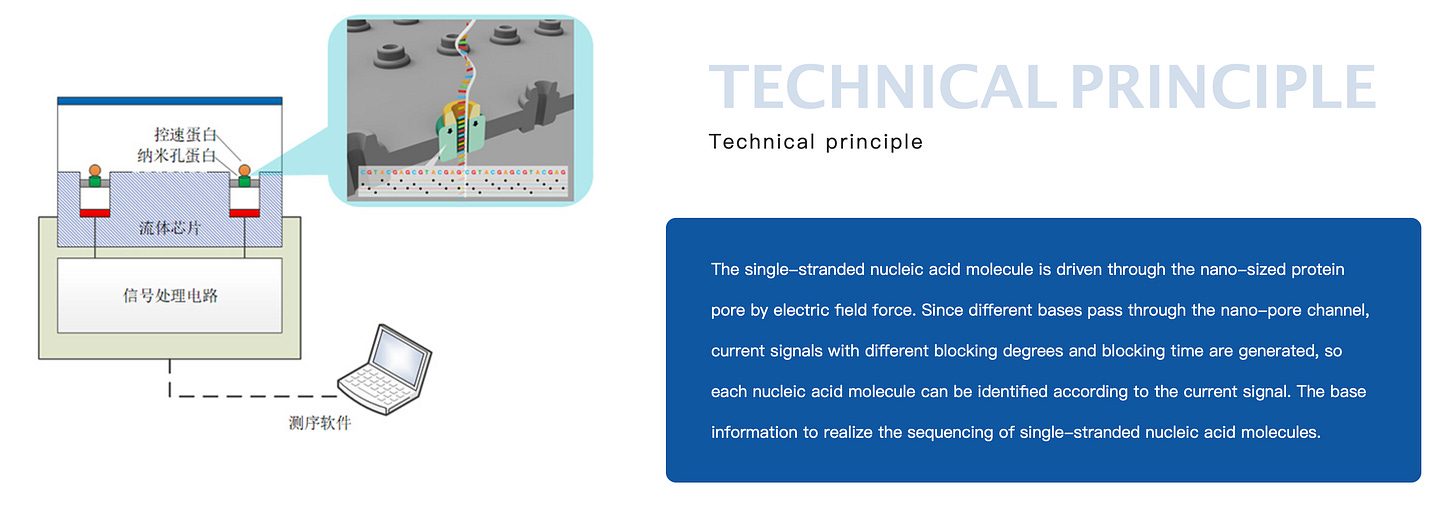Qitan Technology
The final, and potentially most interesting of the three Chinese nanopore startups I’ve recently been looking at is Qitan Technology.
For a nanopore sequencing company that has launched and has publications there’s a surprising dearth of information, at least in western media. Qitan was founded in 2016, and appears to have a market cap of 1.6B USD. Crunchbase suggests they’ve raised $82.7M.
There doesn’t seem to be a huge amount of technical information on the platform available, but the website suggests that this is a stranded protein nanopore platform. A publication from another group also thanks them for providing the gene of MTA helicase, for use in a nanopore peptide sequencing. Overall, the platform looks very similar to Oxford Nanopore. A stranded protein nanopore sequencing platform, using enzymatic motion control:
Data from the QitanTech platform has been presented in a few papers (as far as I can tell, all from Chinese groups). The most recent is a publication from March 2022. In this publication they show data from the QNome-9604. This device has ~300 wells and appears to be a small instrument, similar in size to a Minion:
In their publication they state that “the mean read length, longest read length, and mean read-level accuracy of QitanTech sequencing data were 6,041 bp, 57,037 bp, and 81.40% (Minimap2)”. Runs generated up to 1Gb of data:
They also show a histogram of the read lengths generated in this experiment, in other experiments they’ve shown reads of up to 150Kb.
In comparison to Oxford Nanopore’s early instruments, they fair well:
“Surprisingly, the throughput, mean read length, and Q-value of QitanTech raw reads were better than ONT nanopore raw reads generated by R7 flow cells initially released in 2014 (Ashton et al., 2015; Quick et al., 2015). At present, ONT sequencing has far better performance than QitanTech sequencing (Todd et al., 2018; Naushad et al., 2020)”
I assume this is surprising because the technological approach is largely similar. But it is none the less pretty impressive for them to get a working nanopore sequencing platform launched in less than 5 years.
The big question is, being that the platform is so similar to Oxford Nanopore’s what IP issues would Qitan have outside China? And will we ever see the Qnome available internationally?
But if nothing else, it seems like there’s at least one player in a position to capitalize on the stranded protein nanopore sequencing when any blocking IP does expire.




